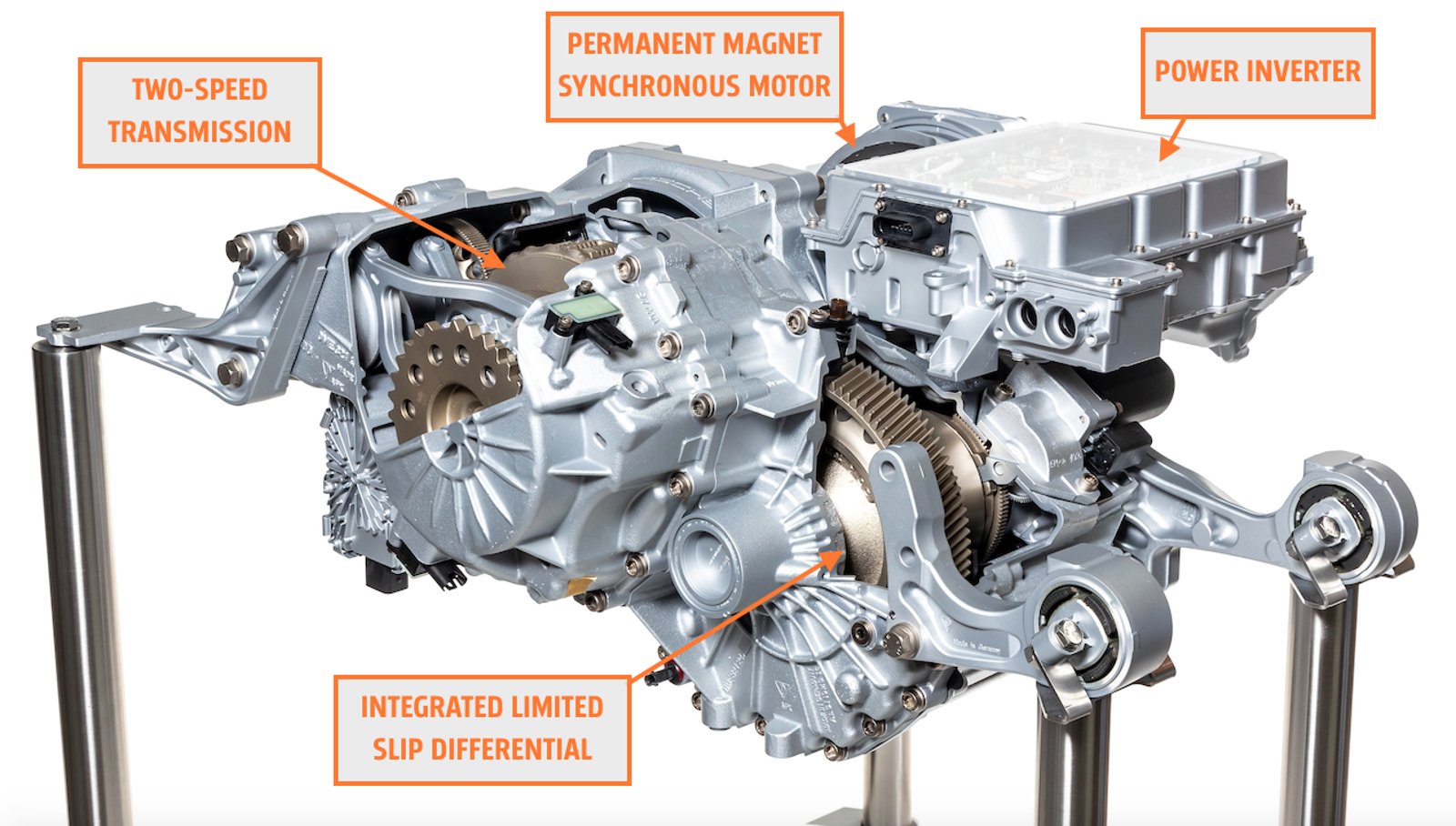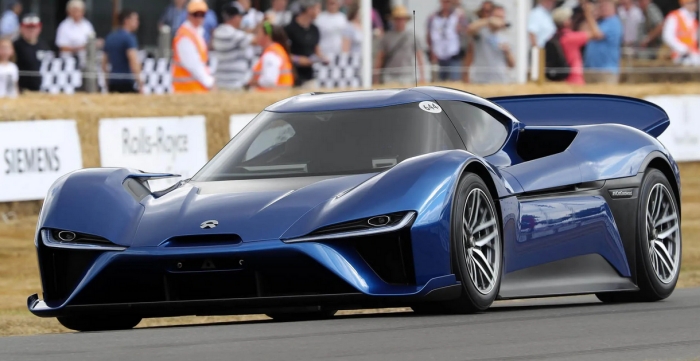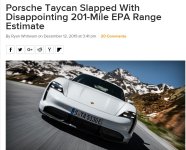For everyone that was anticipating German engineering dominance to smash the upstart Tesla, Taycan is a big disappointment - however measured on its own merits without comparisons it's very impressive for a first attempt.
It's typical Porsche silliness. Why copy successful designs when you can make it 300% more complicated and help make dealerships rich repairing and supporting such a complicated beast?
The initial price tag is only a small part of what makes their cars unaffordable for most people.
I am surprised that the Taycan isnt faster to 100km/h with that lower gearing....
......but maybe it because of its 5100lb weight

We are getting to the point were the real limitations for acceleration is going to be suspension setup and tire compound. How much anti-squat is built into the suspension and how 'sticky' the tires are. Drag cars are setup with enough anti-squat that they actually raise up in the rear under acceleration, despite the massive weight transfer to the rear under acceleration. Too much anti-squat, however, and other suspension characteristics are compromised. Stuff like road handling and comfort.
Increasing the weight can be compensated for by increasing the torque. Increasing the weight increases the pressure of the tires on the pavement, which increases traction, which then can be used to offsets the increased effort to motivate the car forward.
Which means that pretty soon 0-60 times will be irrelevant. For high-end cars the deciding factor on acceleration is going to be just tire compound and road surface. Advanced traction control is going to be needed to keep the tires right on the edge of adhesion to maximize acceleration since the motor will be able to easily exceed traction limits at will.
I really don't understand the point of having the two speed transmission, personally.
Looking at the motor design and the size of it compared to the 2-speed transmission it seems like if you wanted to double the torque... why not just put in 4 motors instead of 2?
I mean just look at that silly mess.
You have the motor, the inverter, the clutch pack, the double set of gears, the limited slip differential and all that complicated mess...
If you want 4wd why not just do 4 motors? You get the same double-the-torque. It's not going to use up any more energy. And you dramatically cut down on the unique part count by a massive amount.
The car is going to require extremely sophisticated traction control to reach it's performance limits, doesn't the limited slip differential just get in the way? I know that motors weigh a lot, but I can't imagine they are that much heavier then that transmission. As long as the weight is positioned correctly in the chassis it's not going to have negative impact on handling or acceleration. A slight reduction in range, maybe.




